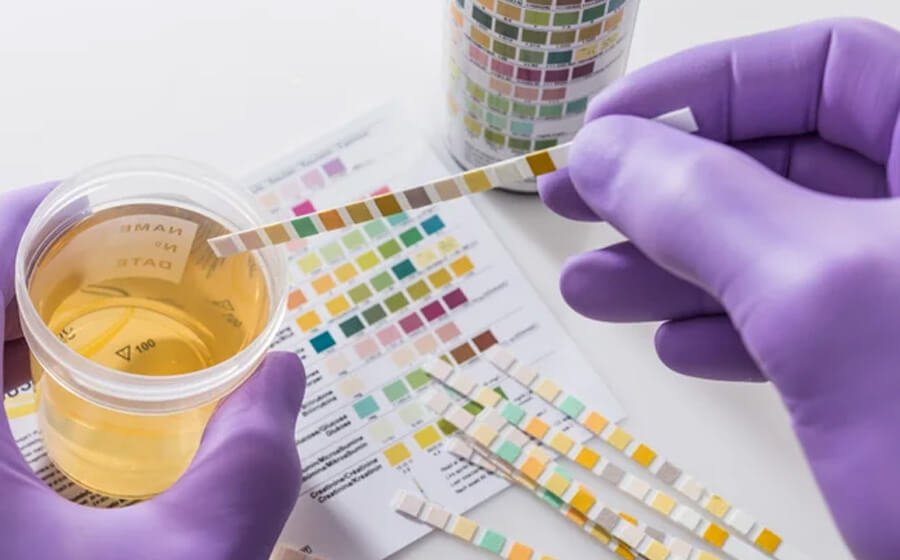Anyone who has ever gone through a urine test, especially for work purposes, knows how scary that experience can be. This fear particularly comes from the uncertainty of whether the medication you are using will show up in the urine test. One drug people have asked a lot about is Suboxone.
Suboxone is a medicine used to treat an individual’s dependency on opioid or narcotic drugs like morphine or heroin. Suboxone is made up of two ingredients Naloxone and Buprenorphine. Buprenorphine was previously used as a pain reliever, but it still helps in preventing other opioids like fentanyl or heroin from affecting your brain.
While naloxone reverses the opioid effects on your nervous system, now that you know what Suboxone is, recovery delivered online suboxone doctors has become a reality. Let’s find out whether Suboxone can be detected in a drug test.
Does Suboxone Show Up on a Urine Test?
The answer to this question is yes and no. No, because Suboxone doesn’t show up on a routine drug panel. Most employers use routine drug panels for pre-employment screening. Yes, because for Suboxone to show up on a urine drug test, someone must order a comprehensive drug screening. An extended drug screen will test either naloxone, Buprenorphine, or metabolites.
As you aren’t sure what tests your employer may use for their pre-employment screening, it is important to disclose your use of Suboxone beforehand. Remember, your employer isn’t allowed to discriminate against people who are on suboxone therapy, but it has to be prescribed by a licensed provider.
How Long Does Suboxone Last in Your System?
Now that you know whether a urine test can detect Suboxone, it’s important to understand how long Suboxone can last in your system. The length of time it takes Suboxone to show up in your system depends on your metabolism. Apart from your metabolism, other factors that affect how long Suboxone lasts in your system include your height, body weight, and liver and kidney function. Another factor that determines how long Suboxone lasts in your body is the amount you take.
So, if you are undergoing a specific test for Suboxone, it can still be detected seven to ten days after you take the drug. For saliva and blood tests, Suboxone can be detected for up to 24 hours. For hair tests, this drug can be detected even after three months since your last use.
Can Suboxone Produce False Positive Results?
There is a possibility for false positive results, but they aren’t that common. Drug tests like urine tests today are very reliable and accurate. However, there are times when false positive results, albeit rare, do happen. So, why would a false positive occur?
A false positive can occur for Buprenorphine, the primary active ingredient in Suboxone. However, drug tests today, including urine tests, can differentiate between Buprenorphine and other opioids.
Can a Suboxone False Negative Occur?
Yes, false negative results do happen, and they occur much more than false positives. A false negative means that your urine test or blood test shows no sign of Buprenorphine present in your body even when you are still taking Suboxone. This can happen because your body has metabolized Buprenorphine out of its system after one to three days.
What Do You Do if You Are Impacted by a False Negative or Positive?
The primary goal of any drug test, from blood to urine, is to determine if an individual is using drugs. But what do you do if the test results differ from what you expect? If you are legally taking Suboxone with a doctor’s prescription and are required to get a test, ensure you get a doctor’s note. With your doctor’s note, you can prove your legal use of Suboxone to your potential employer.
Also, if your drug test result is a false negative and you take Suboxone, talk to your doctor. You may need to investigate the discrepancy between the test and your Suboxone intake. In contrast, if you have a false positive and aren’t taking Suboxone, talk to your doctor or employer.
Remember, drug panels can test any number of different drugs from five to 12. While the five-panel tests may not detect Suboxone, there is a high likelihood that the 10 to 12-drug test panel can detect Suboxone use.
So, rather than get caught off guard, why not inform your employer beforehand to avoid the consequences of failing a drug test?
















